Animals Teaching Resources
Explore animal life in your science classroom with printable worksheets, classroom posters, and more teaching resources all about the different types of animals, their life cycles, characteristics and more!
This teacher-created collection includes a series of animal-focused teacher resources covering reptiles, birds, fish, mammals, and amphibians plus resources that classify a selection of vertebrates and invertebrates!
This comprehensive collection of teaching resources includes editable curriculum-aligned lessons on wildlife, endangered species and more — all ready to be printed and used in the classroom!
New to teaching this section of the science curriculum or looking for some fresh ideas? Read on for some tips on teaching about animal classification from our teacher team!
What Is Animal Classification? A Kid-Friendly Definition
In science class (and in professional study) animals are classified into groups based on physical and genetic characteristics. Scientists use a classification system called the Linnaean system to group different animals into progressively more specific categories, starting with the largest (and most inclusive group) and ending with the smallest and most specific group.
The categories are:
- Kingdom
- Phylum
- Class
- Order
- Family
- Genus
- Species
Helping students to remember these categories of biological animal classification, you might want to use a mnemonic such as:
- King Philip came over from Germany swimming.
- King Philip came over for good spaghetti.
- King Philip came over for good soup.
Sometimes the word "domain" is added to the top of the animal classification list, and in those cases you can add the word "dear" to your mnemonic sentences to help your students recall them all.
In the Linnaean system, every animal in nature is assigned a unique scientific name. The name includes their genus and species and it's used globally to refer to that animal — so, for example, a dog is a dog, but it's also a "canis lupus familiarise" according to its scientific name.
The animal classification system is used all around the world to help scientists understand the relationships between different animals and how they evolved over time.
Teaching About Animal Classification in Elementary School
How in-depth should your lesson planning be for animal classification? In the elementary grades, learning classifications of animals sets the stage for understanding how important this system is when scientists are studying animals in the natural world.
Consider this: In elementary school, students typically learn about the basic categories of animal classification, such as mammals, birds, fish, reptiles, and amphibians.
Your animal classification lessons can extend into learning about specific examples of animals within each category, such as lions and elephants for mammals, and eagles and penguins for birds.
By the time they head off to high school, students should already know the characteristics that define each group — such as the presence of fur or feathers (in birds) or most mammals' ability to give birth to live young. Students should also know about the classification of animals within each group, such as the different types of mammals or birds.
Ready to get started? Explore the resources in this collection!
- Plus Plan
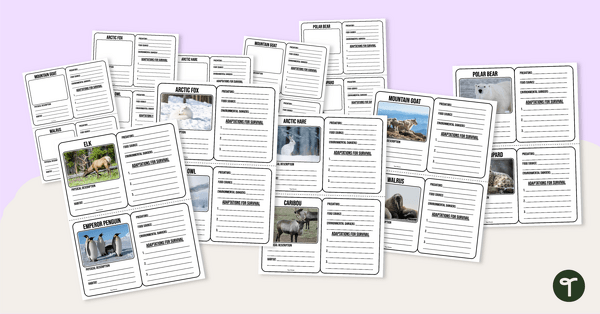
Animals in the Tundra - Adaptation Trading Cards
Discover the adaptations of animals in the tundra with printable animal trading card templates.
- Plus Plan
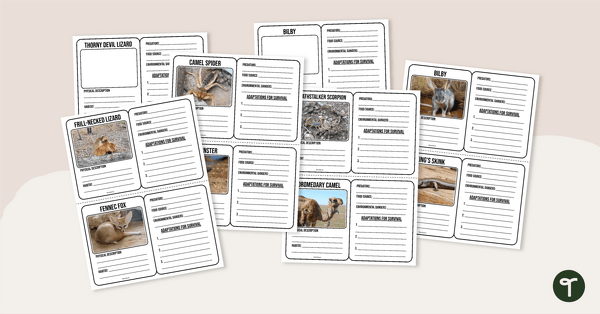
Desert Animal Adaptations - Trading Card Templates
Discover amazing desert animals’ adaptations and display your learning with printable animal trading card templates.
- Plus Plan
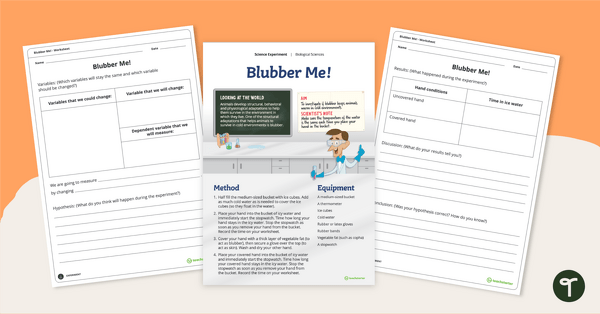
Animal Blubber Experiment - Polar Adaptations Activity
Explores the structural adaptation of blubber with an Arctic Animal Adaptation experiment..
- Plus Plan

Ocean Animal Research Activity Sheets
Research and record information about marine animals with one of four ocean animal worksheets.
- Plus Plan
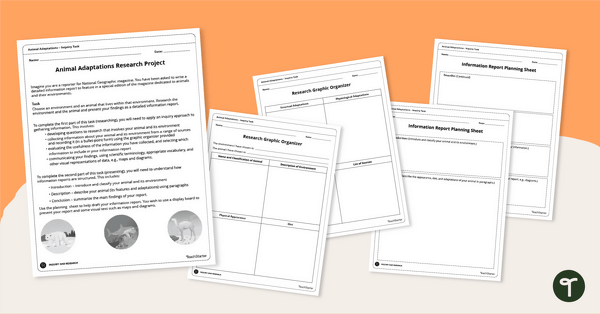
Animals That Adapt - Research Project & Report
Strengthen your students' understanding of conducting research with an Animal Adaptations research project.
- Plus Plan

Monarch Butterfly Migration Map
Use a Monarch Butterfly Migration map to introduce your students to a natural phenomenon of migratory animal behavior.
- Plus Plan
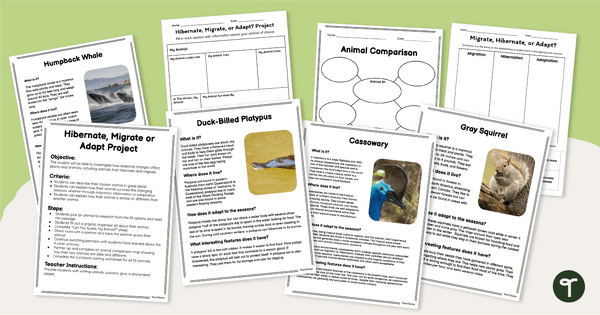
Adapting, Migrating, & Hibernating Animals Research Project
Set this classroom project for students to explore the topic of how seasons affect animals, and develop a species-specific profile on a chosen animal.
- Free Plan
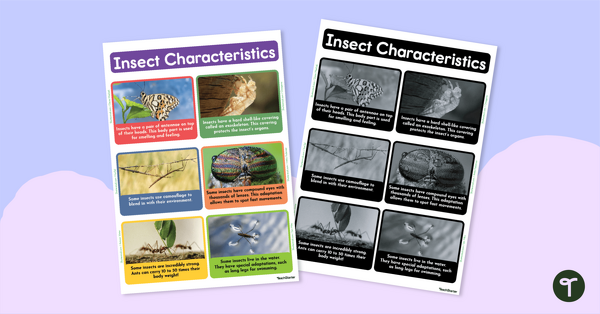
Facts About Insects Poster
Display this poster showcasing interesting insect facts and characteristics in your classroom.
- Plus Plan
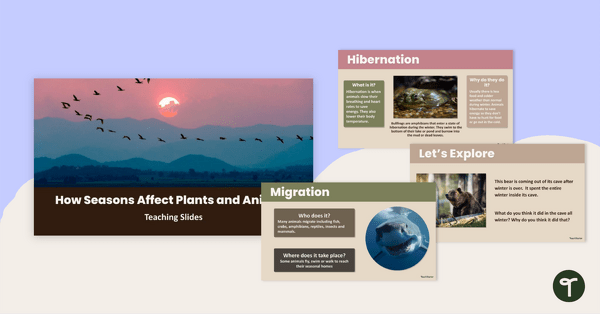
How Seasons Affect Plants and Animals Teaching Slides
Share this informational slide deck with your 2nd grade class to teach students about how seasons affect plants and animals on planet Earth.
- Plus Plan

Plant and Animal Adaptations Flipbook
Use this fun flipbook to teach students about adaptations while allowing them to connect to prior knowledge by answering questions on each page.
- Plus Plan

Plant & Animal Adaptations Poster Set
Display these informative posters in your 2nd grade classroom to remind students of the five ways animals and plants adapt to seasonal changes in their environment.
- Plus Plan
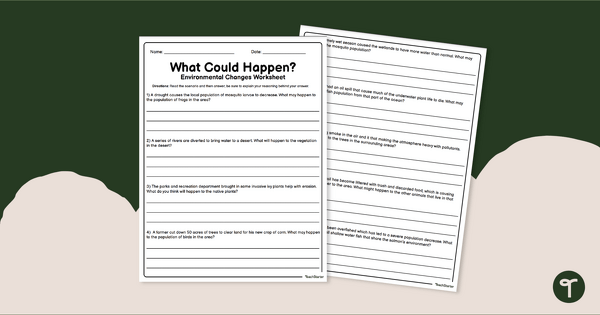
What Could Happen? - Environmental Changes Worksheet
Explore the effects of environmental change on plants and animals with a printable science worksheet.
- Plus Plan

Food Webs - Research Project
Explore the food webs that exist in various biomes around the world with this student-centered inquiry task.
- Plus Plan
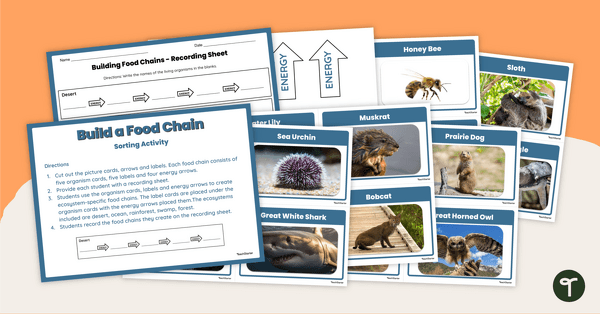
Build a Food Chain - Sorting Activity
Create food chains for a variety of ecosystems with this hands-on, student-centered activity.
- Plus Plan
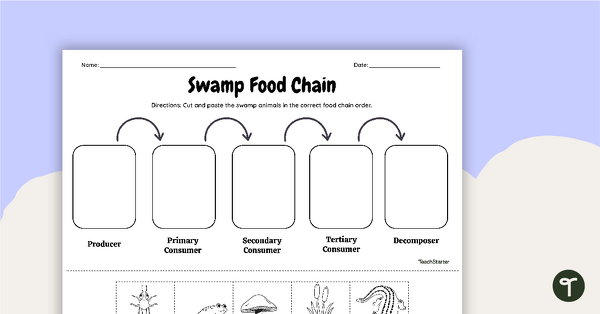
Swamp Food Chain - Cut and Paste Worksheet
Create a swamp food chain to show how energy flows between organisms with this cut-and-paste worksheet.
- Plus Plan
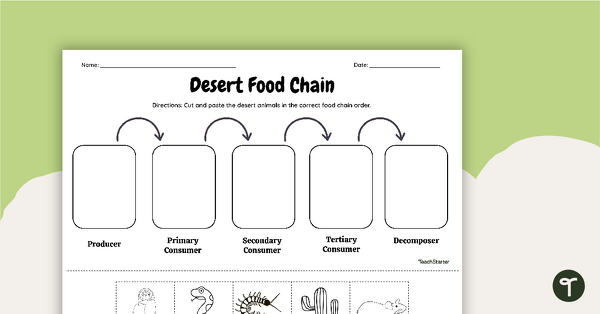
Desert Food Chain - Cut and Paste Worksheet
Create a desert food chain to show how energy flows between organisms with this cut-and-paste worksheet.
- Plus Plan
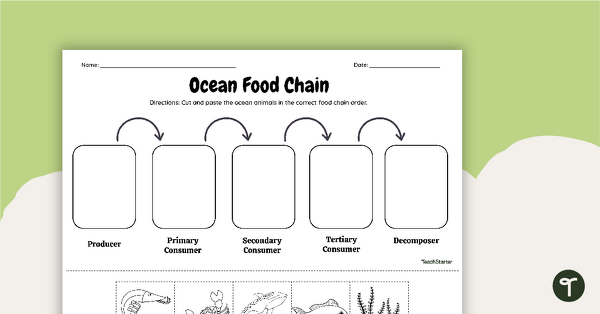
Ocean Food Chain - Cut and Paste Worksheet
Create an ocean food chain to show how energy flows between organisms with this cut-and-paste worksheet.
- Plus Plan
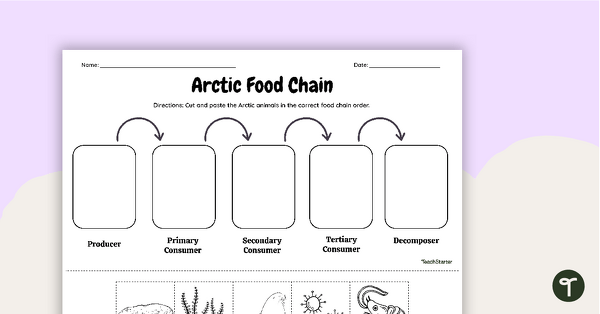
Arctic Food Chain - Cut and Paste Worksheet
Create an Arctic food chain to show how energy flows between organisms with this cut-and-paste worksheet.
- Plus Plan
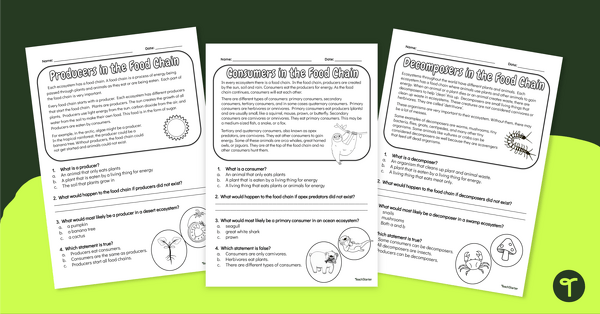
Producer, Consumer, Decomposer - Comprehension Worksheets
Explore the role of producers, consumers and decomposers within ecosystems with this comprehension task.
- Plus Plan
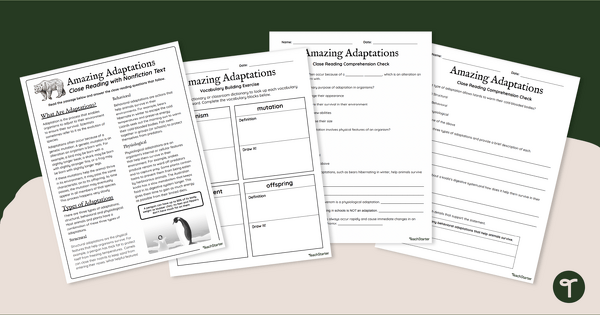
Plant and Animal Adaptations - Comprehension Worksheets
Boost reading comprehension skills with a comprehension passage, with questions, about structural, behavioral and physiological adaptations.
- Plus Plan
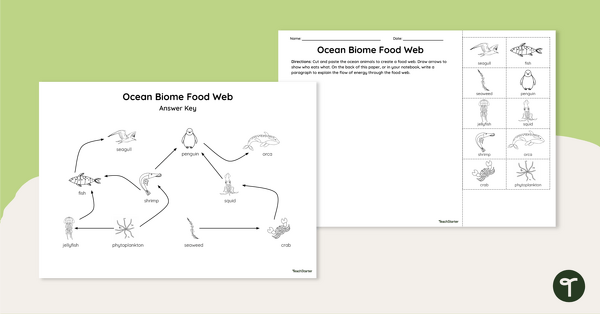
Ocean Biome Food Web - Cut and Paste Worksheet
Challenge students to create a food web and explain how energy flows between organisms with this cut-and-paste worksheet.
- Plus Plan
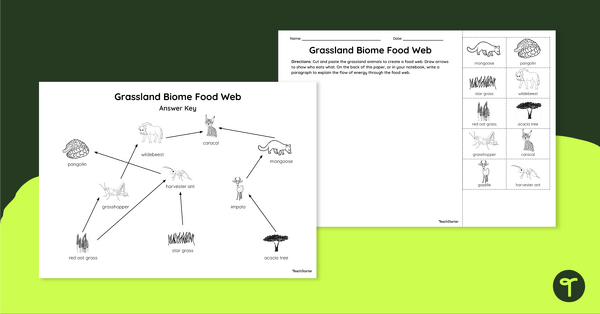
Grassland Biome Food Web - Cut and Paste Worksheet
Challenge students to create a food web and explain how energy flows between organisms with this cut-and-paste worksheet.
- Plus Plan
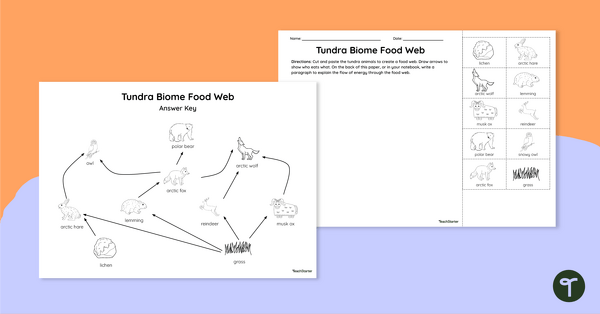
Tundra Biome Food Web - Cut and Paste Worksheet
Challenge students to create a food web and explain how energy flows between organisms with this cut-and-paste worksheet.
- Plus Plan
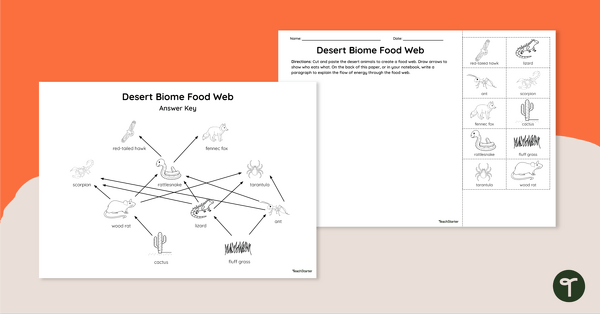
Desert Biome Food Web - Cut and Paste Worksheet
Challenge students to create a food web and explain how energy flows between organisms with this cut-and-paste worksheet.
- Plus Plan
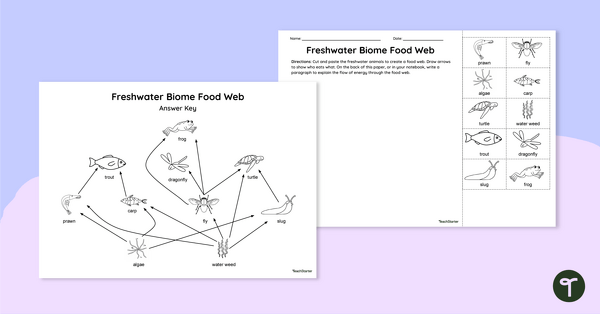
Freshwater Biome Food Web - Cut and Paste Worksheet
Challenge students to create a food web and explain how energy flows between organisms with this cut-and-paste worksheet.
- Plus Plan
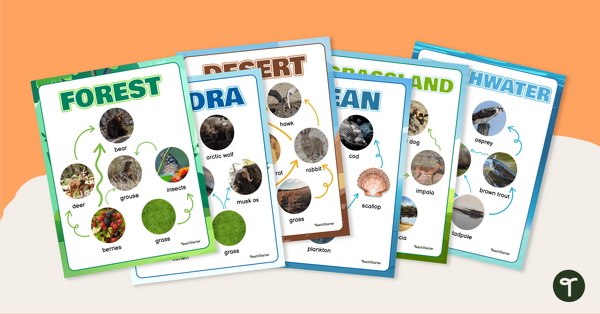
Biome Food Web - Anchor Charts
Learn how energy flows through food webs in different biomes with this set of classroom anchor charts.
- Plus Plan

Protecting Native Plants and Animals – Comprehension Worksheets
Build comprehension skills and learn about human impact on ecosystems with a reading passage and worksheets.
- Plus Plan

Animals and Their Habitats - Sorting Activity
Discover the habitats that are home to Earth’s wildlife with a printable animal habitat sorting activity.
- Plus Plan
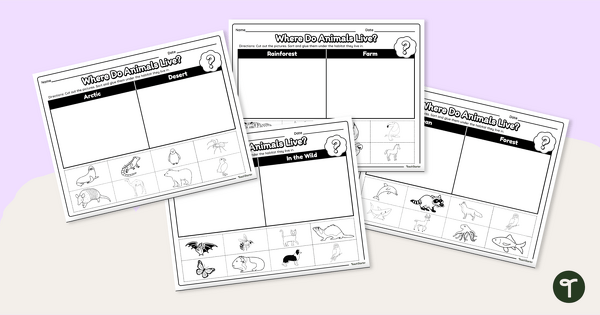
Animals and Their Habitats - Cut and Match Worksheets
Match animals with their habitats with a set of cut and paste worksheets.
- Plus Plan
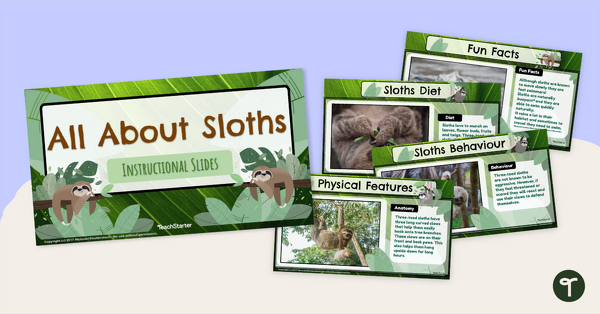
All About Sloths - Animal Research Project Instructional Slides
Use an animated instructional slide deck to guide your students through a sloth research project!
- Plus Plan

Animal Classification Sort
Determine if an animal is an amphibian, reptile, mammal, or bird with this sorting activity.
- Plus Plan
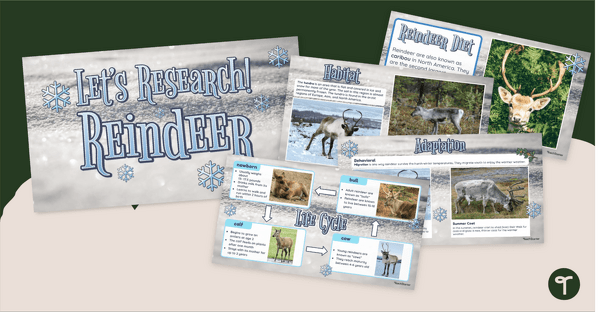
Reindeer Research - Instructional Slide Deck
Use an animated instructional slide deck to guide your students through a reindeer research project!